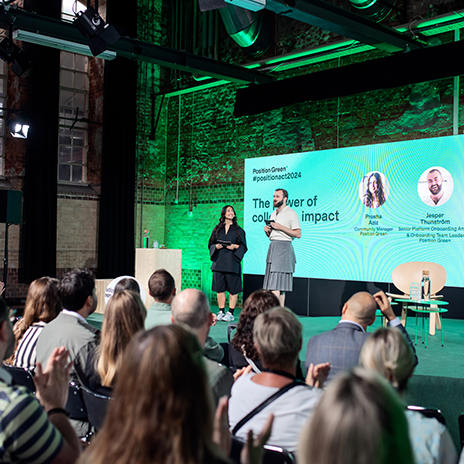Why ESG due diligence in private equity is business critical, and can drive positive change

We are reaching an inflection point with sustainability matters and fiduciary duty for businesses and investors. There has been a noticeable ideological shift in recent years, with due diligence on ESG considerations moving from the periphery of a Compliance Officer or CFO’s gaze to a more central focus, and the regulatory landscape has changed drastically. The Sustainable Finance Disclosure Regulation (SFDR), aimed at increasing transparency of sustainability issues among financial institutions (FIs), is now live, while the Corporate Sustainability Reporting Directive (CSRD) will begin implementation in January 2024.
The Corporate Sustainability Due Diligence Directive (CSDDD) is currently in trilogue negotiations between the European Parliament, Commission and Council. Alongside its sister directives above, it seeks to engender sustainable business practices and responsible corporate behaviour and, distinctly, anchor human rights and environmental considerations into organizations’ corporate governance. With these three major sets of rules either already in, or about to come into play, the market standard for ESG requirements is shifting considerably.
For this reason, due diligence in ESG matters is becoming more important than ever, particularly for buyers and investors.
What is ESG due diligence?
The first question is, what differentiates ESGDD from other investor due diligence? Well – in the underlying principles of good risk analysis and management from the buyer’s perspective – it should be nothing.
The risk assessment process when identifying investment opportunities, following initial screening and preliminary negotiations, has long been a mainstay in the investment timeline for private equity general partners (GPs). Traditionally, this has included four core tenets – commercial, legal, financial, and tax, part of the caveat emptor for the buyer on potential acquisitions. Over the last decade, the desire to include ESG factors has grown as the material need for a more nuanced analysis of a companies’ risk factors, and indeed its growth trajectory, along with more ethical and less risky investments, has risen up the agenda.
Initially driven by investors cognizant that such factors, pushed by widespread concerns of how failures or shortcomings in ESG would impact the long-term viability of a business – let alone the ethical question of whether such businesses should take responsibility of these issues for a greater purpose – is now becoming a regulatory requirement for investors, both GPs and LPs. The situation has evolved from identifying firms with an ethically sound approach to those with a strategy with proven business returns within the global mission towards a sustainable future.
How does this look in practice? A careful analysis of not just the risk factors, but ESG policies, are key. For instance, is the business behind the curve on whichever governance diversity policies it has (or doesn’t have) in place? Has it considered potential human rights violations in its value chain? This is particularly important if suppliers up the chain have links to nation states with known or suspected human rights abuses or poor labour laws. And, of course, at the forefront of many people’s mind, is the climate risk. Assessing a companies’ greenhouse gas emissions (GHG) profile across all three Scopes is critical, particularly its Scope 3 – its value chain.
What is driving this and why does it matter? For investors? For companies?
Regulatory pressure is a major driver pushing ESGDD up the agenda for GPs and asset managers. The Sustainable Finance Reporting Directive (SFDR) has been a main push factor so far, coming into force in January 2023, with the EU Taxonomy guidelines a guiding element and methodology.
Under SFDR, the three classifications for funds are Articles 6, 8 and 9, and market participants are required to designate all funds as such and make disclosures in line to support this. With the default classification for funds with no ESG focus being Article 61 it is Articles 8 and 9 where ESGDD comes into play. Increasing demand on GPs and managers from their LPs to only target investments that either engender positive environmental or social characteristics (Article 8), or has sustainability as an objective (Article 9), means these buyers need apply ESGDD, through the entire investment cycle.
And so with SFDR, and soon with CSDDD, which is set to marry ESG with fiduciary duty, the pressure is mounting on managers and investors to have in place sound ESGDD if they are to both stay competitive and within the law. So, how does this look?
What should good ESGDD look like?
The fundamentals of good ESGDD bear resemblance to the other core tenets for buyers before they make an investment. This includes pre-investment screening before the deeper due diligence commences, to rule out those companies that will clearly not, for instance, meet the requirements of that particular fund, such as an Article 8 or 9 fund.
Position Green has developed its own proprietary digital platform that supports asset managers, GPs and investors during the entire investment cycle; screening new investment opportunities, conducting ESGDD for potential investments, and ongoing monitoring their portfolio while invested. The pre-investment solution lets investors screen and conduct ESGDD to identify potential risks and opportunities prior to investment. Solutions need to be based on international sustainability standards, such as ESRS, SFDR, TCFD2, and the GHG protocol, among others. We then provide a structured methodology for data collection and a full opportunity assessment.
The goal here is to enable in-house and external analysts to perform due diligence based on specific areas of expertise. This is done to ensure transparency and traceability for the diverse and complex ESG factors when considering the target company’s sustainability performance.
Continual access to the data and associated analytics, and the aggregated data metrics, is important for ESGDD. Position Green’s solution offers access by both the asset and portfolio managers by way of dashboards, tables and visual presentations. Data-driven insights can then be leveraged for negotiation and closing, and buyers can create post-closing action plans and reporting metrics from the investment, whether reporting to their own boards, or indeed to institutional investors and LPs.
And finally, post-investment solutions are also key. This ensures that investors have a common method for monitoring the portfolio, fund and assets over time. Ideally, and this is the case with our products, having traceable and quality-assured data reporting, with which the asset owner can assess, analyze and review how investments and holdings live up to ESG regulations, standards and agreed action plans, is a gold standard.
Looking to the future?
Ultimately, moving beyond reporting and compliance, is the recognition that value will be created by going through this process. For companies, demonstrating their sustainability transition, both to consumers and to other businesses, will have a positive commercial effect. At the same time, GPs need to demonstrate to LPs that they’re both at least in line with, or ideally, ahead of the curve on sustainability, and also that investing in potential portfolio companies with sustainable business models will actually increase the value of that company. Strong ESG profiles and policies can contribute to boosting financial performance – conversely, the lack of such policies increases risk. And so, for those seeking to mitigate unnecessary risk, it all starts by applying ESG due diligence.
Learn more about Position Green’s full-cycle investment software that supports general and limited partners during the entire investment cycle – from screening new investment opportunities and conducting ESG due diligence for potential investments to monitoring their portfolio while invested.
1 That is to say, there is not sustainable investment objective, nor do they embrace investment in assets with environmental or social benefits
2 Task Force for Climate Related Financial Disclosures

Bengt Enge
Senior Director
Position Green


